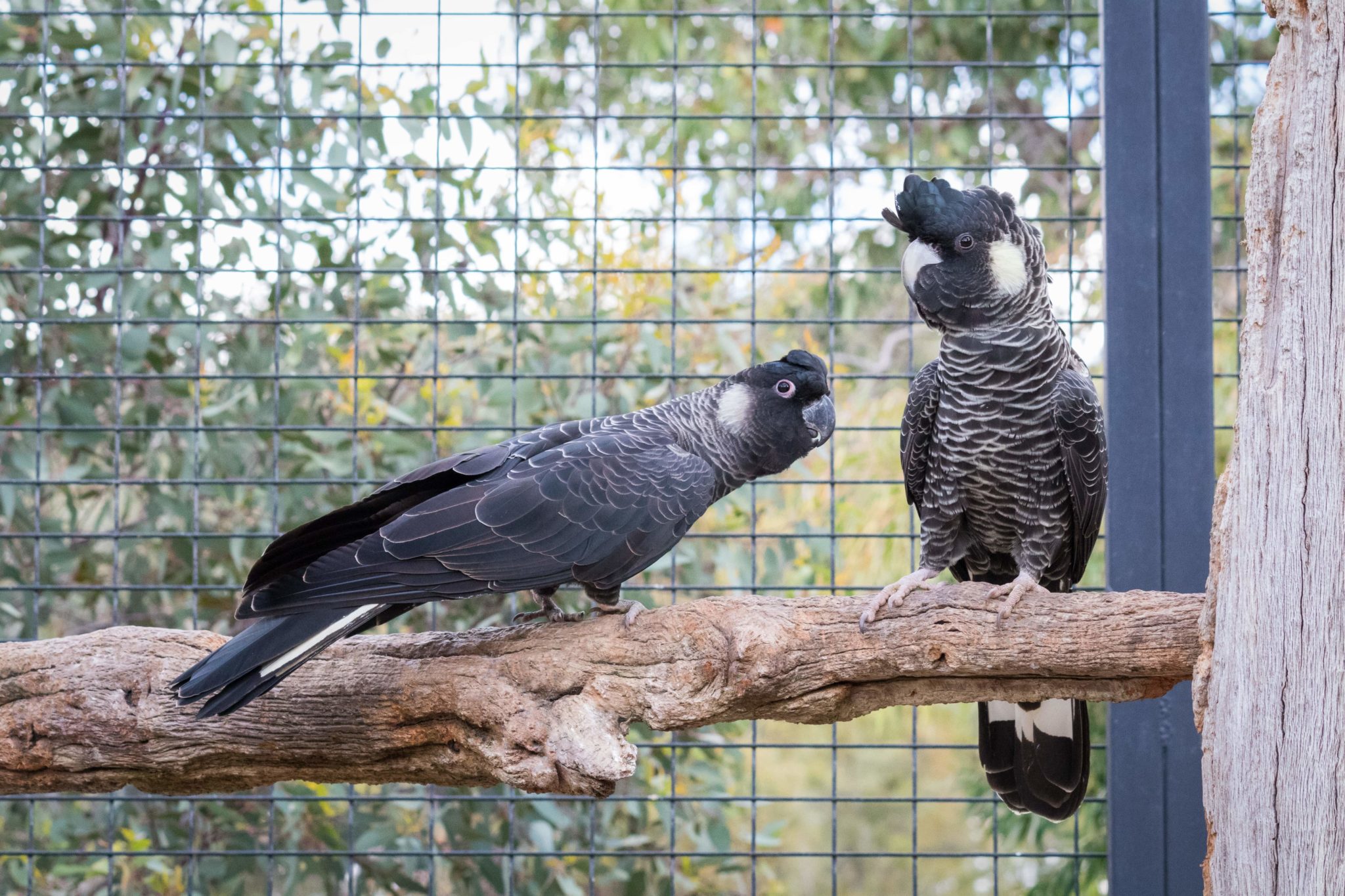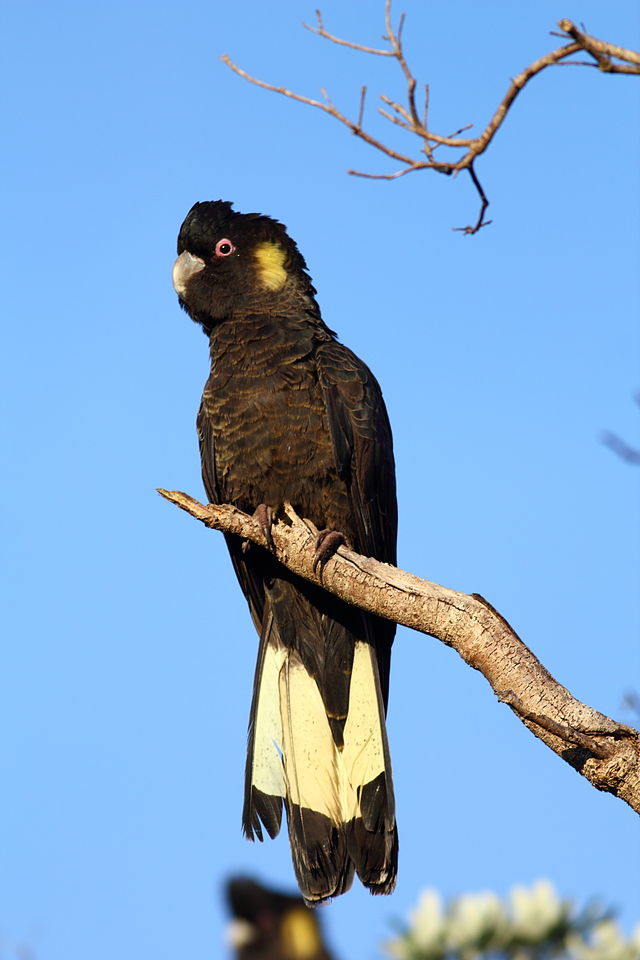
Any interference with their nests from logging and deforestation or poachers stealing their babies, has a BIG impact on the population size of these slow reproducing birds. The female will lay a couple of eggs but only one will survive. These large parrots can live for up to 50 years but they are very slow at reproducing. There is also a sub-species of Palm Cockatoo ( Probosciger aterrimus) that is found only on the very tip of Cape York and rarely seen.Īll Black Cockatoos are sociable and enjoy hanging out in large groups but they are also happy spending quality ‘couple time’ with their partners. Other species of Black Cockatoo include the Glossy Black Cockatoo ( Calyptorhynchus lathami) found in declining populations in NSW, Victoria, QLD and SA and two species found only in Western Australia, the Carnaby’s Black Cockatoo ( Calyptorhynchus latirostris) and Baudin’s Black Cockatoo ( Calyptorhynchus baudinii). There are six different species of Black Cockatoos in Australia but only two of them are common: the Yellow and Red-Tailed Black Cockatoos. All Black Cockatoos are sociable and enjoy hanging out in large groups but they are also happy spending quality ‘couple time’ with their partners.These large parrots can live for up to 50 years but they are very slow at reproducing.The Yellow-tailed Black Cockatoo is found along south-eastern Australia. Red-tailed Black Cockatoos occur across Australia from the Kimberleys, Queensland down to Darling River. Glossy Black Cockatoo ( Calyptorhynchus lathami), Carnaby’s Black Cockatoo ( Calyptorhynchus latirostris) and Baudin’s Black Cockatoo ( Calyptorhynchus baudinii).īlack cockatoos are common all across Australia. Other species of Black Cockatoo you might see include: The female also has yellow checks and yellow panels on their tails. The Yellow-tailed Black Cockatoo ( Calyptorhynchus funereus) on the other hand can be identified by the yellow edges of their black feathers. Females have black and orange bands and pale spots on their feathers. Male cockatoos are entirely black except for the identifying red feathers. Red-Tailed Black Cockatoos ( Calyptorhynchus banksii) can be easily identified by their red tail feathers.
#Pics of black cockatoo full
Click on any image in the galleries to display in full screen.There are six different species of Black Cockatoos in Australia but only two of them are common: the Red and Yellow-Tailed Black Cockatoos. All other photographs were taken with the Canon 7Dii and the 100-400 mm lens, hand held. The shots of the couple preening in the gum tree were taken with the Canon 60D. We have two galleries for you: one showing the Yellow-tailed Black Cockatoo in a mix of poses, the other as a flying sequence.

However if one of them gets spooked, it gives a screeching alarm call and the flock takes off. They are weary birds, but if you approach slowly, they let you take their portrait while they are busy eating. We were moored at the jetty and could hear their raucous calls whenever they were there, feasting on the pine cones. At Spermwhale Head in the Gippsland Lakes, there are a few pine trees and banksias on the point. The Yellow-tailed Black Cockatoos feed in small raucous and noisy flocks and often socialise before dusk, which is when we saw them recently. In the Eyre Peninsula (South Australia), it has been declared endangered. This parrot is considered “secure” in most regions, although its numbers have reduced a lot. It frequents woodland, heathland and pine plantations. It is said that the average suitable tree for nesting is over 200 years old, which explains the increased scarcity of suitable habitat. The Yellow-tailed Black Cockatoo is found in Central and Southern Queensland, New South Wales and into Victoria and South Australia. Once hatched, chicks are looked after by both parents for up to six months, but typically only one chick survives. The female incubates them while the male supplies her with food. The hollows can be one to two meters deep with a base of wood chips and gum leaves.

This cockatoo nests in big isolated trees, mainly eucalyptus with large hollows, so it can fly to and from them unhindered. This does not endear it with orchard growers who see it as a pest when it descends on young trees, just like its cousin the Sulphur Crested Cockatoo. The cockatoo is also fond of the larvae of tree boring beetles, gauging the larvae out and often damaging trees in the process. It keeps to the trees, only going to ground level to inspect fallen pine or banksia cones or to drink. It nips the cone off at the stem and holds it in one foot, then systematically lifts each segment and extracts the seed. It prefers green cones from banksias, she-oaks and hakeas, but is also partial to pine cones as you can see in the photo. Wood boring grubs and seeds are the favourite food of the Yellow-tailed Black Cockatoo.


 0 kommentar(er)
0 kommentar(er)
